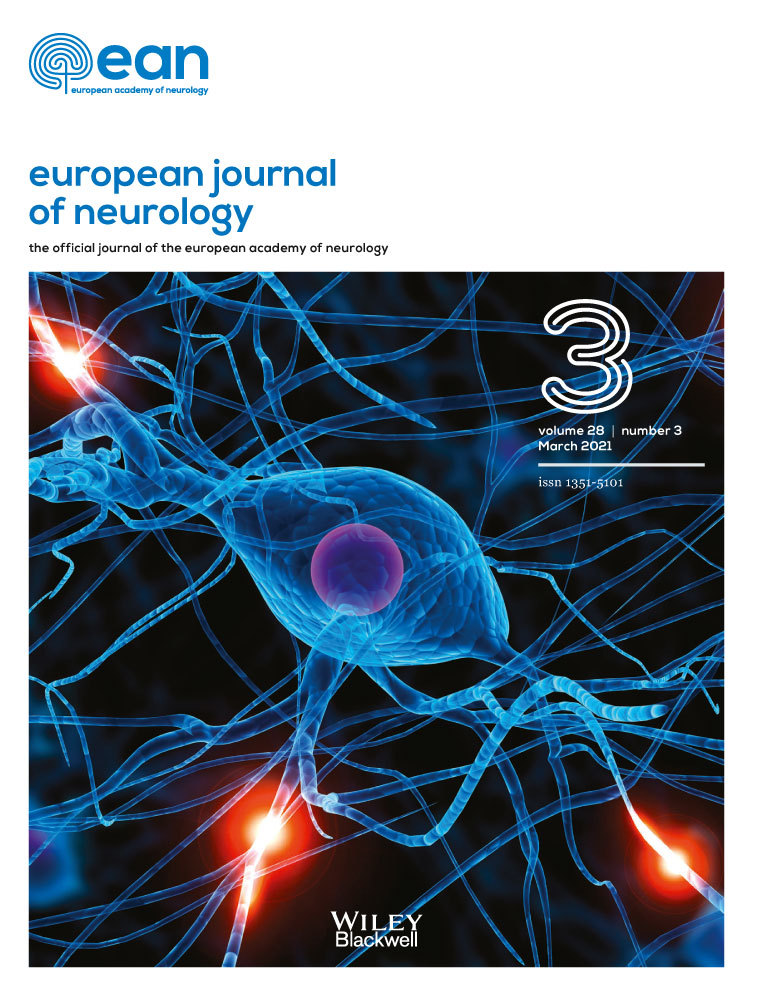Genetic profile and clinical characteristics of Chinese patients with spinocerebellar ataxia type 2: A multicenter experience over 10 years
Abstract
Background and purpose
Spinocerebellar ataxia type 2 (SCA2) is the second most common type of spinocerebellar ataxia in China. However, data on the clinical and genetic features of Chinese SCA2 patients are scarce. This study aims to provide a comprehensive description of in the Chinese SCA2 cohort.
Methods
A total of 135 patients with SCA2 from 92 families and 104 unrelated normal controls were recruited from three medical centers between 2008 and 2020. Sanger sequencing and TA cloning were used to determine the CAG repeat length and intrinsic structure. The clinical data of patients with SCA2, including electromyography, magnetic resonance imaging, positron-emission tomography, and clinical scale scores, were recorded.
Results
The mean ± SD age at onset of SCA2 patients was 32.6 ± 11.9 years and the corresponding CAG repeat length was 42.1 ± 3.6. CAG repeat length accounted for 64% of the age-at-onset variance. We observed that patients had a significantly lower proportion of (CAG)8CAA(CAG)4CAA(CAG)8 within normal alleles than normal controls (48.8% vs. 64.9%; p = 0.003), while the distribution of the proportion of (CAG)13CAA (CAG)8 was the opposite. Peripheral neuropathy was frequent, occurring in 75.9% of the patients. Parkinsonism was relatively common, with a frequency of 11.8%. Two patients with parkinsonism had a significantly more severe reduction in dopamine transporter levels in the bilateral striatum than the one patient with pure ataxia. An infant-onset case of SCA2 with more than 180 CAG repeats was characterized by global development delay, hypotonia and hearing impairment.
Conclusions
This study describes the genetic profile and clinical characteristics of the largest SCA2 cohort to date in the Chinese population and analyzes inter-population differences. Many aspects of this study population were different from other populations with SCA2.
CONFLICT OF INTEREST
The authors declare no financial or other conflicts of interest.
Open Research
DATA AVAILABILITY STATEMENT
The data that support the findings of this study are available from the corresponding author upon reasonable request.
L. Yang: DataCuration (supporting); FormalAnalysis (lead); Investigation (lead); Methodology (lead); ProjectAdministration (lead); Visualization (lead); WritingOriginalDraft (lead). Y. Dong: Conceptualization (equal); DataCuration (supporting); Fundingacquisition (supporting); Resources (lead); WritingReviewEditing (supporting). Y. Ma: Investigation (supporting); Methodology (supporting); Software (lead); Visualization (supporting). W. Ni: ProjectAdministration (supporting); Software (supporting); Supervision (lead); Visualization (supporting). Z.-Y. Wu: Conceptualization (equal); DataCuration (lead); Fundingacquisition (lead); WritingReviewEditing (lead).




